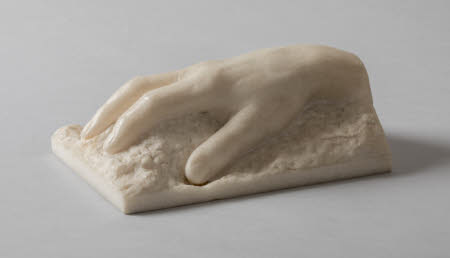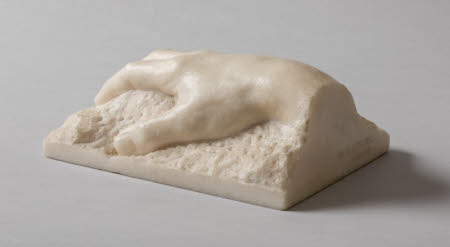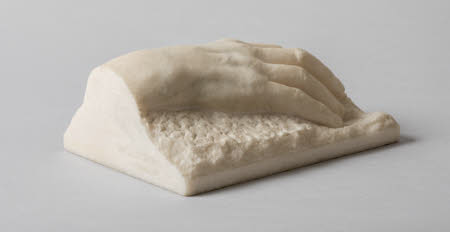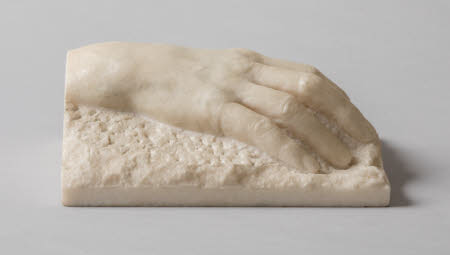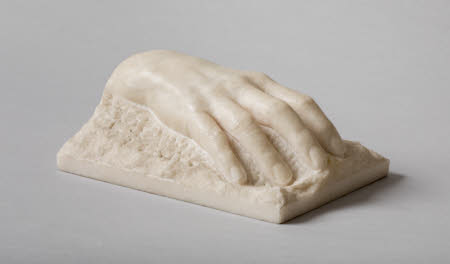Hand and wrist of Bernard Shaw
Sigismund de Strobl (Zsigmond Kisfaludi Strobl,1884-1975)
Category
Art / Sculpture
Date
1932
Materials
Marble
Measurements
165 x 229 mm (6 1/2 x 9 in) (Width) x (Length)
Place of origin
Great Britain
Order this imageCollection
Shaw's Corner, Hertfordshire
NT 1275320
Summary
Marble sculpture, Hand and Wrist of Bernard Shaw by Sigismund De Strobl (1884-1975), carved in 1932. Signed: “by S. STROBL HUNGARY”.
Full description
Marble sculpture, Hand and Wrist of Bernard Shaw by Sigismund De Strobl (1884-1975), carved in 1932. Signed: “by S. STROBL HUNGARY”. Bernard Shaw sat for a bust by the Hungarian sculptor Sigismund De Strobl (1884-1975) in 1932 whilst he was at the Malvern Theatre Festival, and this marble hand was sculpted at this time. A surviving photograph shows Shaw with De Strobl on the balcony of the Malvern Hotel in 1932, published by Shaw in his autobiographical work Sixteen Self Sketches (1949). A further photograph shows Shaw with De Strobl and Laura Knight at Malvern: Knight was painting her portrait of Shaw at the same sittings. The importance of this marble hand by De Strobl to Shaw is highlighted by the fact that when he was at Ayot rearranging the interiors of Shaw’s Corner to create the “showplace” as he called it, he wrote very firmly to his secretary Blanche Patch in London in 1949 asking for it: “The marble of my hand by Sigmund Strobl is precious. I will not sell it. Send it down here.” Shaw was a keen admirer of Sigismund De Strobl’s work, and wrote the preface to a catalogue of an exhibition of his sculpture held at the White Allom Gallery in 1935. (Shaw, ‘Portraits and Figures of Sigismund de Strobl’, White Allom Galleries, London, 1935). A British Pathé film made in 1937 records Shaw with De Strobl in his studio, and a still from the film reveals the two men shaking hands (‘Camera Interviews: Strobl, the famous Hungarian sculptor’, 1937, British Pathé. NT Shaw Photographs 1715211.60). (Alice McEwan, 2020)
Provenance
The Shaw Collection. The house and contents were bequeathed to the National Trust by George Bernard Shaw in 1950, together with Shaw's photographic archive.
Marks and inscriptions
BY S. STROBL HUNGARY
Makers and roles
Sigismund de Strobl (Zsigmond Kisfaludi Strobl,1884-1975), sculptor
